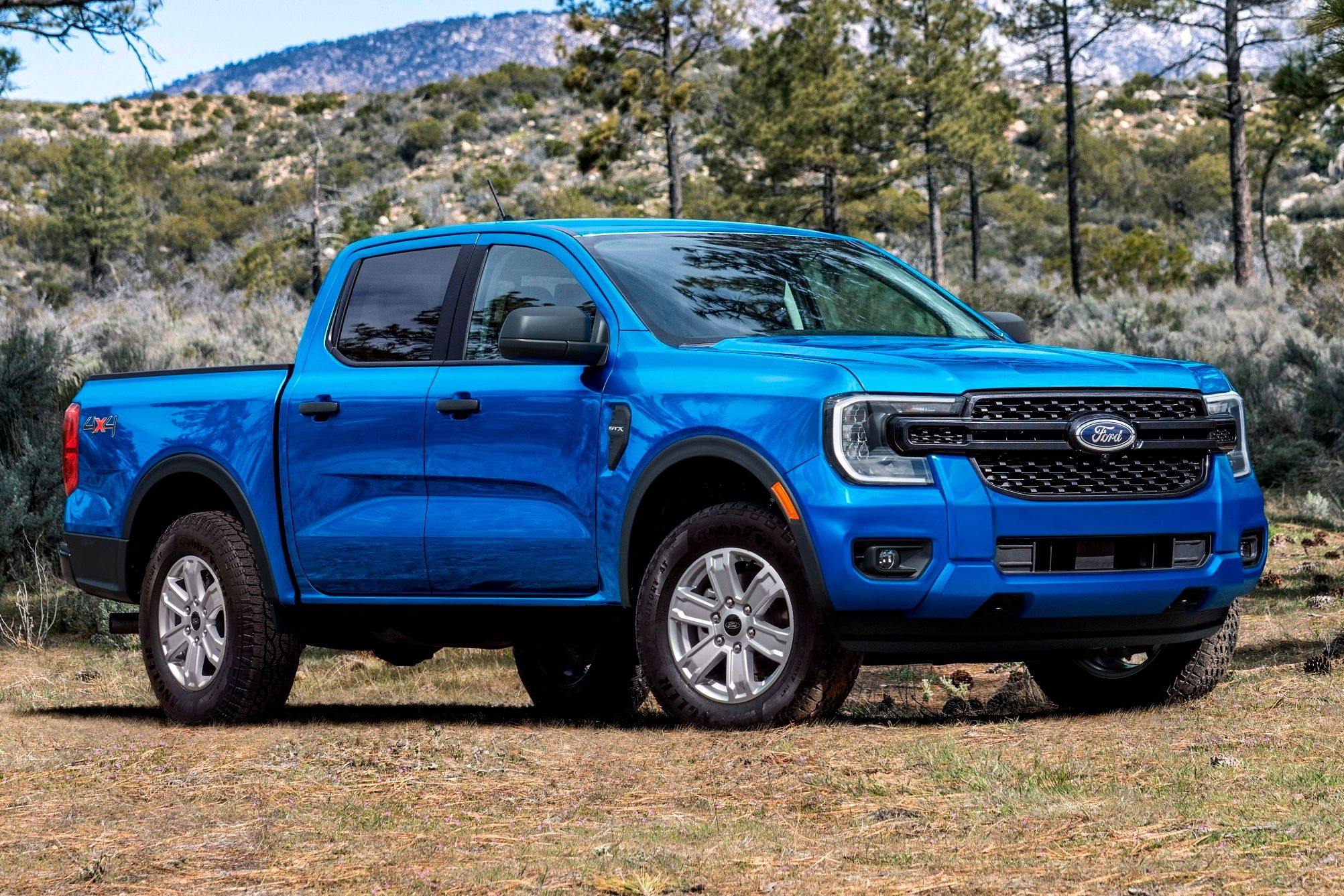
In February, Ford teased the new generation of its Everest SUV. Essentially an SUV version of the versatile Ford Ranger pickup, the body-on-frame Everest has the same capable underpinnings but can seat up to seven occupants. Although unlikely to ever make it stateside, Ford has now revealed the new Everest in full and we're kind of jealous that this butch-looking SUV won't come to the US. It shares many design cues with the new Ford Ranger, comes with a range of powerful engines, and promises quiet cruising on the highway that hasn't come at the expense of its off-roading capabilities. While neither as rugged as the Bronco nor as soft as an Explorer, the Everest strikes a nice aesthetic balance between the two.
The new Everest has a wider track and longer wheelbase than before, adding to its brawny appearance. The C-clamp headlamps and horizontal upper grille bar are attractive features in front, and from the side, the Everest's tall stance is notable. The rear aspect is perhaps a tad generic, but overall it's a handsome vehicle.
"We showed customers the Everest at several points during the design process, and their feedback was consistent: They loved the exterior with the strong and rugged design, but they also thought it was sleek and modern," said Max Wolff, design director for China and Ford's International Markets Group. This process of involving the public in the development process of a new model is something Ford is doing increasingly well.
Inside, the Everest has a roomy and modern cabin with Ford drawing inspiration from modern homes. This can be seen in the implementation of upscale materials and attractive ambient lighting. Available features include a 10-way power driver's seat, front-seat heating and ventilation, and a 12.4-inch digital instrument cluster. The second row slides further forward than before, making accessd to the third row easier. Lower-spec variants have an eight-inch digital instrument panel and 10.1-inch touchscreens, but a 12.1-inch touchscreen is also available. The portrait-style screen is vertically arranged and runs Ford's SYNC 4A software.
Powering the Everest is a choice of three turbo-diesel engines and a 2.3-liter EcoBoost four-cylinder, depending on the market. The engine lineup includes a new 3.0-liter turbo-diesel V6 and a 2.0-liter turbo-diesel four-cylinder with either one or two turbos. Depending on the model, either six- or 10-speed automatic transmissions will be available.
Both part-time and full-time four-wheel-drive systems will be available. The latter utilizes an electronically controlled on-demand two-speed electromechanical transfer case with numerous drive modes. A water wading depth of over 31 inches, a maximum braked towing capacity of 7,716 pounds, and an advanced camera system for trailering make the Everest versatile for a variety of uses.
Like the Ranger, the new Everest will be available with a host of driver-assistance features like lane-keeping assist with road-edge detection, reverse brake assist, blind-spot monitoring with trailer coverage, and evasive steering assist.
"When we started imagining the next-gen Everest, we started not at the beginning but at the end: With our customers," said Ian Foston, chief platform engineer for Everest. "They're people who like adventure, recreation and being able to go out with family and friends. Whether they're conquering sand, rocks or city life, these customers appreciate the utility, capability and spaciousness of an SUV."
Pricing and an on-sale date for the new Everest have not yet been announced, but Americans will have to make peace with admiring this new Ford from a distance.
